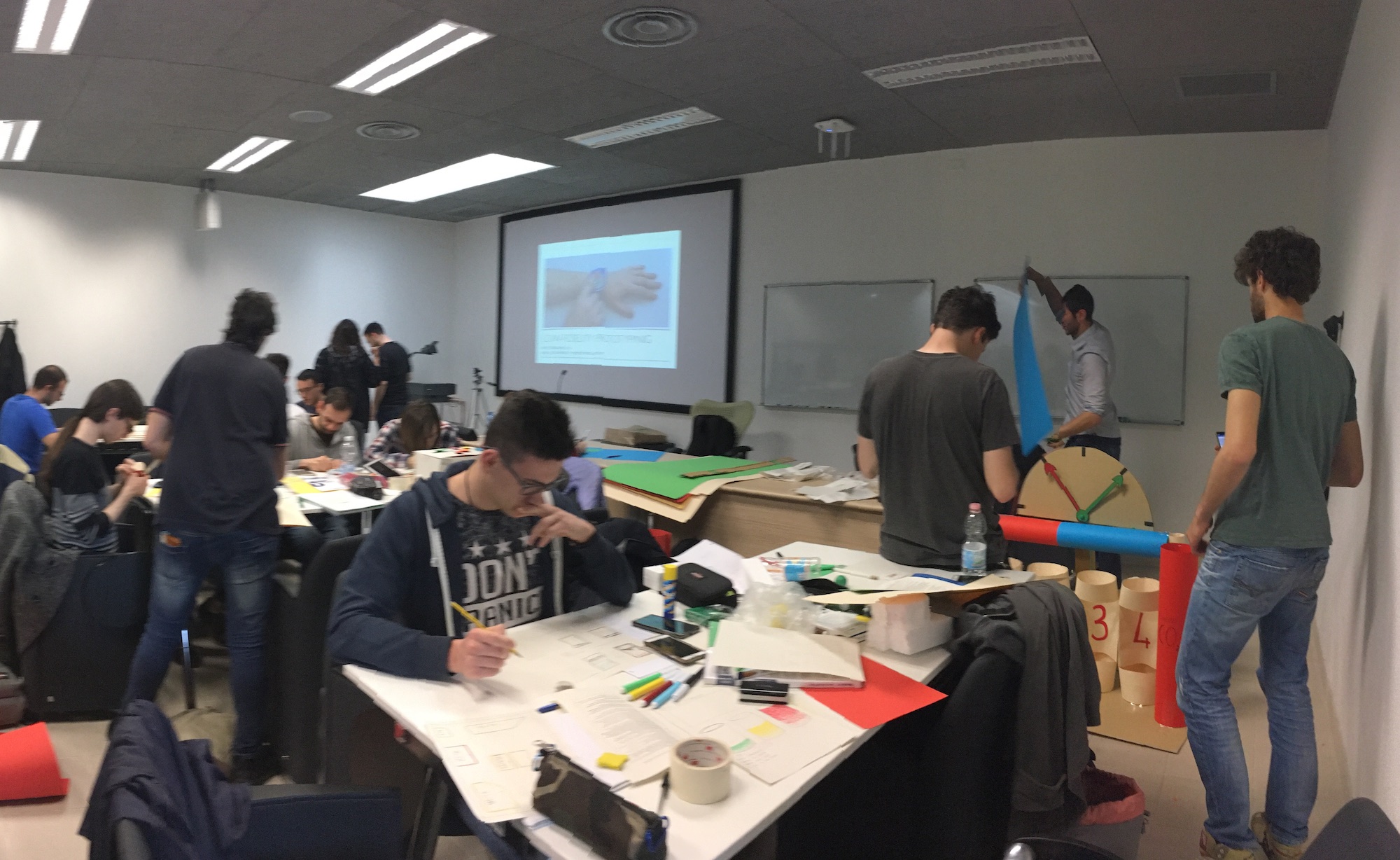The goal of this workshop is to elaborate on the state of the relationships between HCI and education, considering both the teaching of HCI in traditional contexts where the discipline should be a fundamental part of the students’ curriculum and in complementary educational contexts where HCI can be used as a support for the teaching of other subjects, in a variety of situations.
The workshop aims to have an international perspective, enlarging the view to the Mediterranean area for describing the state of the art of these relations, highlighting potentialities and areas where the contribution of HCI specialists could bring a significant added value.
HCI classes
HCI is a discipline that investigates the relation between users and computer systems and therefore it is not surprising that its teaching can be found as part of the curricula of Computer Science degrees around the world. Its importance as a funda- mental part of the educational path for the Computer Science curriculum was recently underlined by the curriculum developed and approved by the two major computer associations of computer scientists [4]. HCI, however, differs from most disciplines that are taught in a Computer Science curriculum because has at its root design thinking, which is a type of activity quite different from those ones connected with scientific and computational thinking and that requires different methods and tools. HCI has also deeply changed along the decades, as a consequence of the rapid evolution of hardware technology and the shift of devices and applications from scientific labs to everyday environments. Therefore, although its interdisciplinary nature has been clear since its origin, the relations with other disciplines have changed along this evolution. For example, while the relations and the differences between HCI and Ergonomics were clear in the nineties of the previous century, dominated by the use of screens and WIMP interfaces, things has radically changed in the following decades with ubiquitous computing, tangible and gesture-based paradigms where embodied interaction plays a fundamental role in the definition of the user experience. So a fundamental question is which are the core paradigms and which are the related design and evaluation methodologies that should be taught nowadays in an HCI course for students.
Another important question concerned with teaching of HCI is how theoretical knowledge and design competences should be related. Whilst according to the guidelines mentioned above, both of them are requested, in most cases, as evidenced e.g., in [1], there is an unfair balance towards theoretical teaching. As a result, the training received is inappropriate and introduces a gap between academia and industry. Moreover, the gap is more and more occupied by other disciplines, that are focused more on the communication and promotion of the product rather than on its design, contributing to increasing the confusion about the role and the potentials of HCI in the industrial processes.
Finally, the national educational context plays a fundamental role in HCI education. Whereas in some contexts the role of HCI is stil underestimated and it is considered as an ancillary discipline of Computer Science, in other situations HCI has stronger relations with other disciplines and it is a fundamental part of educational curricula (e.g., Design) that are different from Computer Science. For this reason, this workshop – starting from the experience of the previous CHitaly workshop that focused on the Italian context – aims to have an international perspective and to enlarge the view to the Mediterranean area, for exchanging ideas, comparing experiences, and analyzing relations with the other disciplines.
HCI beyond HCI classes
Another relevant question is related to the role that HCI can play for improving the teaching of other disciplines in a variety of contexts, from the traditional school context to more heterogeneous situations where the focus is on public engagement.
As for the school context, a recent development concerns the introduction of the STEM (i.e., science, technology, engineering, and mathematics) and STEAM (i.e., that adds art to the previous subjects) educational paths. An interesting field to explore is how HCI and related design thinking methodologies could play a unifying and interdisciplinary role for teaching these disciplines, as it is already happening for computational thinking [2].
Educational cultural contexts open to common people such as museums and exhibitions can be empowered by HCI as well, as demonstrated by several successful experiences that achieve educational goals by engaging people.
Engagement is a keyword also for additional scenarios departing from the traditional cultural institutions. In particular, public engagement that describes the myriad of ways in which the activity and benefits of higher education and research can be shared with the public is becoming increasingly important for our society and it is increasingly perceived as one of the missions of higher education (i.e., in Italy this is part of the effort labeled as the third mission of the public University, aimed at sharing the results of research with the society).
In all these contexts HCI can play a fundamental role which the workshop aims to investigate, by collecting experiences and suggestions for future development.
1. Carmelo Ardito, Rosa Lanzilotti, Roberto Polillo, Lucio Davide Spano, and Massimo Zancanaro. 2015. New Perspectives to Improve Quality, Efficacy and Appeal of HCI Courses. In Proceedings of the 11th Biannual Conference on Italian SIGCHI Chapter (CHItaly 2015). ACM, New York, NY, USA, 188–189.
2. Valerie Barr and Chris Stephenson. 2011. Bringing Computational Thinking to K-12: What is Involved and What is the Role of the Computer Science Education Community? ACM Inroads 2, 1 (Feb. 2011), 48–54.
3. Alan Dix, Alessio Malizia, and Silvia Gabrielli. 2016. HCI and the Educational Technology Revolution. In Proceedings of the International Working Conference on Advanced Visual Interfaces (AVI ’16). ACM, New York, NY, USA, 368–371.
4. Joint Task Force on Computing Curricula Association for Computing Machinery (ACM) IEEE Computer Society. 2013. Computer Science 2013: Curriculum Guidelines for Undergraduate Programs in Computer Science. http://www.acm.org/education/CS2013-final-report.pd/. (2013).
